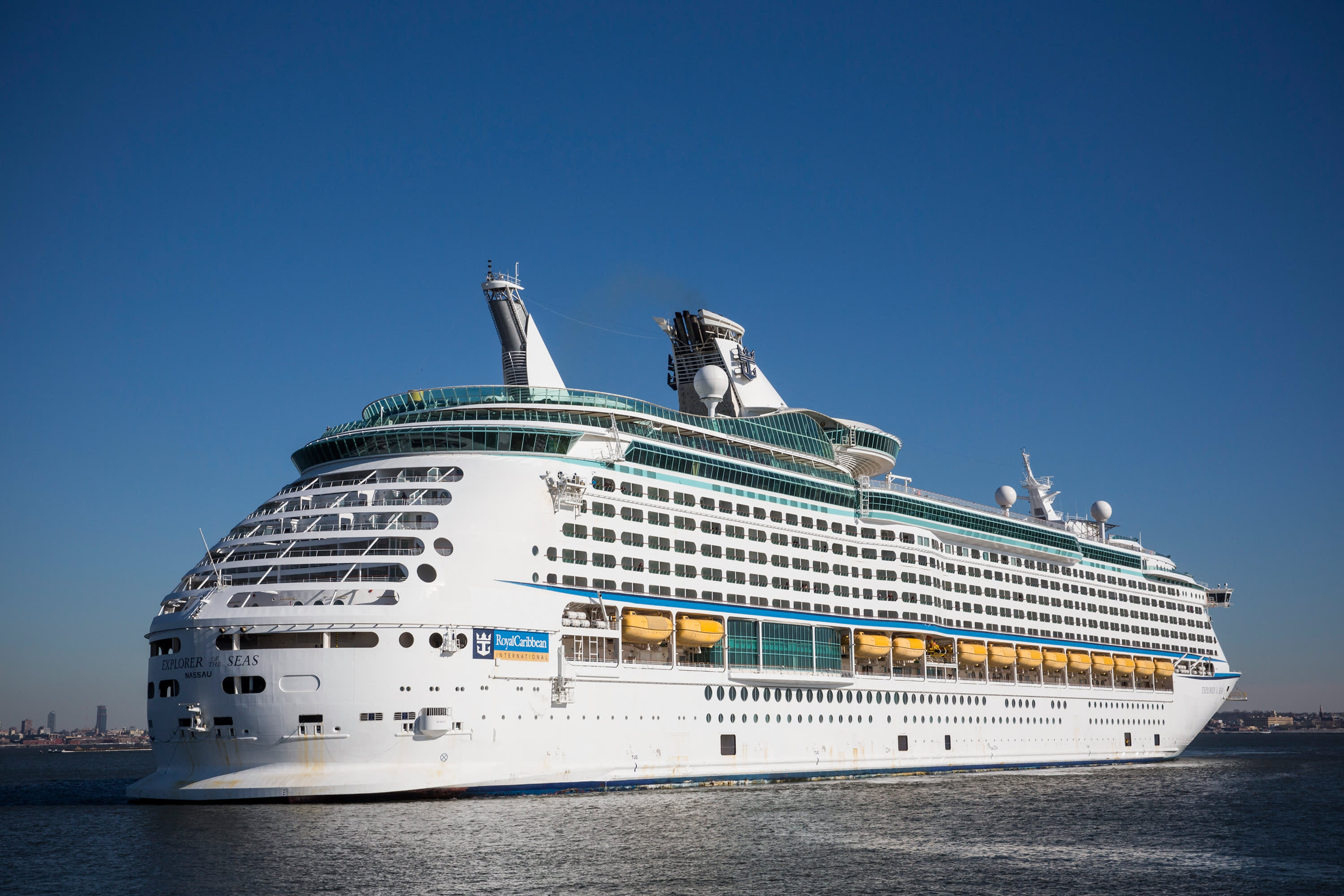The Royal Caribbean cruise ship ‘Explorer of the Sea’.
Getty Images
Help for airlines. Help for cruise ship operators. And shale operators. Vague talk of payroll tax cuts that would last through the end of the year.
Stocks are moving on hopes of fiscal stimulus in the absence of market-moving coronavirus news.
Take Royal Caribbean, which was halted three times on the upside in 45 minutes after President Donald Trump said he was looking at helping the cruise and airline industry. Never mind there were no specifics.
Not just cruise ships and airlines rose — even Hertz went up, though the president made no promises he was going to rescue the rental car business.
No matter. Hyatt went up. Marriott rose. So did Visa and Mastercard.
Same with Energy. Vague reports that the president was likely to seek aide for shale companies helped lift Continental Resources, Hess, and Pioneer Natural Resources.
Another big mover: banks. The SPDR Bank ETF, a basket of large banks, up nearly 6% on the back of a stunning 27-basis point move in the 10-year Treasury yield, all of which occurred after the President made those midday remarks. It’s about time: Banks are down 30% since the end of February.
As for the rest of the market, it’s the same problem. Stocks trade on a multiple of future earnings. No one has a clue what future earnings, six to 12 months out, are going to look like, so the markets are swinging all over the place.
Because of the extreme uncertainty, the usual internal signs of a market bottom — extreme oversold conditions, the CBOE Volatility Index way elevated to the highest level since the financial crisis, 90% downside volume days — all of which have happened — are not considered reliable.
Some traders are looking at trading ranges in a worst-case scenario: a recession.
Dennis DeBusschere at Evercore ISI noted this morning that the S&P will typically drop 13% from high to low in a typical year. At the close on Monday, the S&P was 18.2% off its highs. He noted the median recession decline is down 28%, implying in a “typical” recession we would lose another 10 percent. Others are circulating more extreme forecasts.
”We are only pointing this out as we saw a number of notes highlighting that typical recession declines are in the 30% to 40% range,” DeBusschere said.
